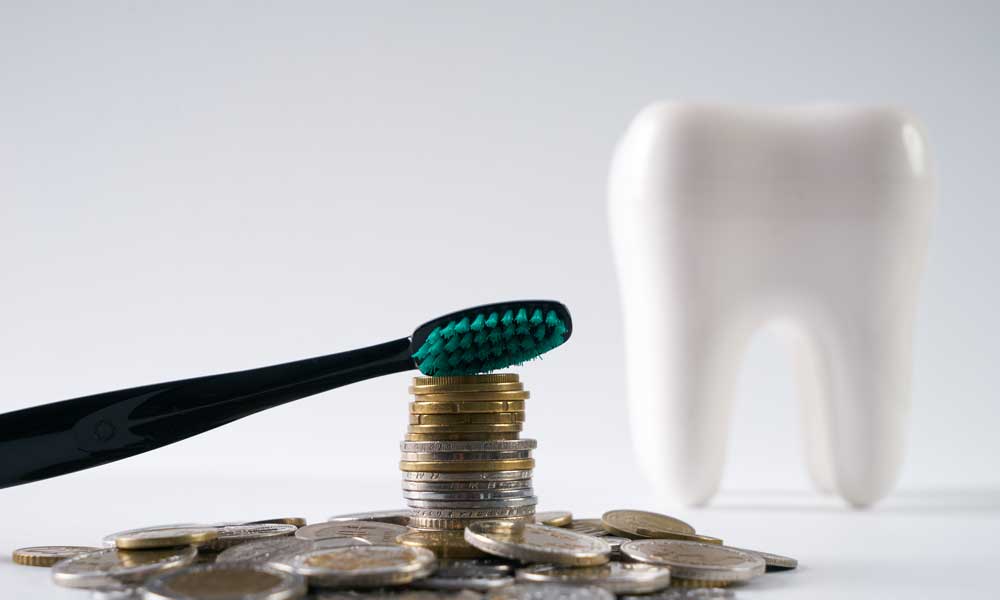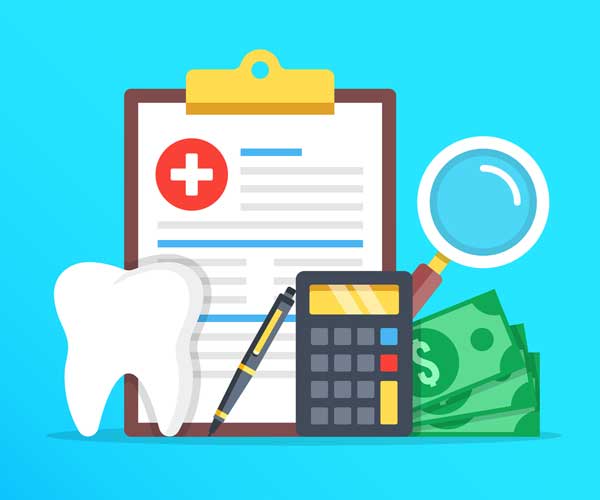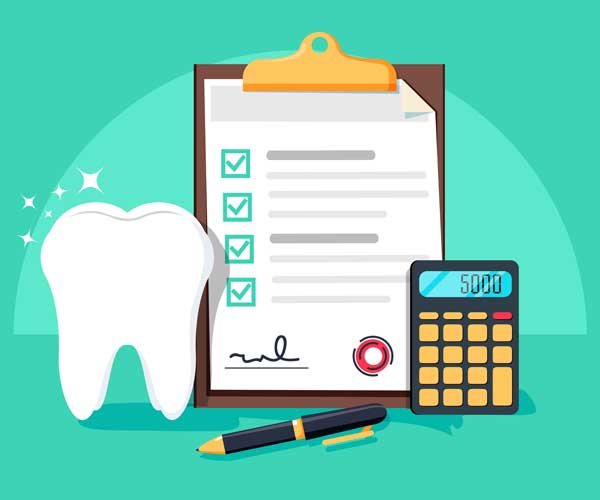Dental Insurance vs. Dental Savings Plans: What’s the Difference?
When it comes to paying for dental services, most people have three choices: purchase dental insurance, buy a dental savings plan, or pay for all dental services out of pocket. To decide which option is best for you, here is the information you need to compare dental insurance to a dental savings plan.

What is a Dental Savings Plan?
Dental savings plans are used as an alternative to dental insurance. You pay a fee to be a part of a savings group, and when you go to the dentist, you receive services at a discounted rate. You will have to go to a dentist that is approved by the savings plan to get the special rate on procedures.
Annual fees for a dental savings plan typically range from around $300 to $375.
Benefits of Dental Savings Plans

Dental savings plans typically cost less than dental insurance plans. You can save up to 60 percent of the cost for many dental procedures, and there are no deductibles or waiting periods. You current dentist probably works with a variety of savings plans, so call the office to learn which plans your dentist accepts. There are no health restrictions that prevent you from qualifying for a dental savings plan.
Disadvantages of Dental Savings Plans
The most significant drawback to a dental savings plan is that you pay out-of-pocket for all of your dental procedures, although at a discounted price. That means you must be able to afford the discounted rate at the time of service to be able to get the dental work you need to be completed. Although you get a discounted rate, this can make it difficult to get the services you need.
If you plan to go to many dentists or specialists, it may make sense to choose a dental insurance plan that helps to absorb some of the costs.
What is Dental Insurance?
Dental insurance is a type of health insurance that pays for dental care. You pay monthly premiums for the dental insurance plan, and in return, the insurance pays a portion of your dental costs. Typically, you’ll have a copay for office visits and specific services for in-network providers that have been negotiated between the dental insurance company and the providers.
Dental insurance premiums vary but typically cost around $230 to $385 a year.
Most dental insurance plans have a deductible you must meet before the policy covers a portion or all of the costs, as well as yearly caps for the amount the dental insurance pays out. You may have a waiting period of up to 12 months before the dental insurance plan covers some procedures. It is important to thoroughly read through the dental insurance plan’s terms to understand what is covered and what isn’t.
Types of Dental Insurance

There are different types of dental insurance plans available. Two of the most common plans are PPOs and DHMO. PPO stands for Preferred Provider Organizations, which is a network of dentists who agree with an insurance company to work for fees set by dental insurance plans. You can choose to go to a dentist’s office that is out of the network, but your costs will likely be higher than if you have an in-network dentist who is obligated to accept the insurance terms.
With Dental Health Maintenance Organization (DHMO) plans, the insurance company pays the dentist on your plan each month, and you receive services at a reduced rate or at no cost. You can’t choose your dental provider with a DHMO plan and must get services from an assigned dentist, however, you may be able to change your provider to another one that’s in-network.
Benefits of Dental Insurance
The most significant advantage of having dental insurance is the savings it can provide. While the cost of cleanings and checkups may be minimal ($127 on average), the expense of having more intensive procedures completed can increase quickly. In the case of pricey non-routine dental care like a root canal, dentures or implants, the high cost can be mitigated by dental insurance, so you don’t have a massive effect on your finances.
Another benefit to having dental insurance is that it raises the likelihood that you will see a dentist at regular intervals. Many people avoid going to the dentist until they have a problem due to the cost of treatment. With dental insurance, the cost of preventative visits is usually covered, and if you have good dental health, going to the dentist may not cost you anything.
Disadvantages of Dental Insurance
One of the most significant obstacles with using a dental insurance plan is the time it takes to see a dentist. Many insurance plans only cover a certain number of visits per year, and those visits have to be a certain length of time apart. It could be months before you see a dentist again so that your insurance can cover it.
Like many health insurance plans, dental insurance premiums can be expensive under certain circumstances. Anyone with poor dental health may pay a higher premium because more dental work is expected throughout the year the plan is active. Where you buy dental insurance is also a factor for premium costs. Group plans like those employers offer to employees have better rates than individual dental insurance policies. Many retirees elect to work part-time to participate in group medical and dental insurance offered by larger employers and save on rates.
High deductibles can also be a problem with dental insurance. Based on the specifics of the plan that you choose, you may have to pay a high deductible before services are covered. If you need emergency dental work or complex procedures, you will pay for a significant portion of it before your insurance begins to cover any of the cost.
